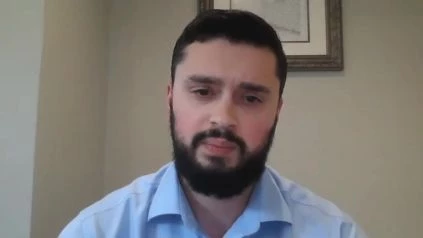Erik A. Williams, MD of the Foundation Medicine, Inc. discusses CDKN2C-Null Leiomyosarcoma: A Novel, Genomically Distinct Class of TP53/RB1–Wild-Type Tumor With Frequent CIC Genomic Alterations and 1p/19q-Codeletion.
INTENT
Leiomyosarcoma (LMS) has recurrent mutations but few actionable genomic alterations in TP53 and RB1. Here, we searched for repeated actionable genomic changes in LMS that occur in the absence of popular oncogenic drivers that are not treatable.
Tissues from 276,645 unique advanced cancers were sequenced by hybrid-capture-based next-generation DNA and RNA sequencing / comprehensive genomic profiling of up to 406 genes, including 2,570 uterine and soft tissue LMS. Clinicopathologic characteristics of related patient cases have been characterized.
OUTCOMES
Overall, at chromosome 1p32.3 (3.0 percent of LMS), 77 LMS displayed homozygous copy loss of CDKN2C. In contrast with the remainder of the LMS cohort, genomic alterations (GAs) in TP53, RB1, and ATRX were uncommon (11.7 percent v 73.4 percent, 0 percent v 54.5 percent, 2.6 percent v 24.5 percent, respectively; all P < .0001). For GAs in CIC (40.3 percent v 1.4 percent) at 19q13.2, CDKN2A (46.8 percent v 7.0 percent), and RAD51B (16.9 percent v 1.7 percent; all P < .0001), CDKN2C-null LMS patient cases were substantially enriched. Chromosome arm-level aneuploidy review of available cases of LMS patients ( n = 1,284) showed that 81% (58 of 72) of CDKN2C-null LMS had 1p/19q-codeletion, a substantial enrichment compared to 5.1% in the remaining cohort of LMS (P < .0001). Overall, 99% of CDKN2C-null LMS were in women; the median surgical age was 61 years (range, 36-81 years). Fifty-five patient cases were primary uterine, four were nonuterine and the remaining 18 were primary sites of confusion. At least focal epithelioid variant histology was seen in sixty percent of cases. With 62 percent of confirmed uterine primary LMS at the International Federation of Gynecology and Obstetrics level IVB, most patients had advanced-stage disease. In two publicly accessible databases, the Cancer Genome Atlas and the Project GENIE initiative, we further validated our results.
CONCLUSION
CDKN2C-null LMS defines a genomically distinct tumor, including the possible use of specific cyclin-dependent kinase inhibitors, that may have prognostic and/or therapeutic clinical implications.

